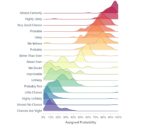
by tyler garrett | May 26, 2025 | Data Visual
In the digital age, businesses increasingly grapple with datasets characterized by cyclical patterns—data fluctuating over regular intervals, such as hourly website traffic, seasonal sales performance, or monthly system loads. As decision-makers, interpreting these cyclical patterns accurately and intuitively becomes crucial for effective strategic planning. At our software consulting firm, we constantly explore innovative visualization methods to elevate your analytical insights, bridging complex data patterns to actionable business strategies. One compelling strategy for exploring cyclical data lies in radial visualization techniques—visual storytelling tools specifically designed to illuminate cyclicity and periodic behaviors clearly. In this article, we delve deep into the strategic advantages, implementation best practices, and real-world benefits of adopting radial visualization techniques in your analytics workflow.
Why Radial Visualization Techniques Excel in Cyclical Data Interpretation
Linear or conventional visualization approaches—such as simple line or bar charts—often fall short in effectively highlighting repetitive patterns embedded within cyclical datasets. Radial visualizations, by contrast, map temporal or periodic data around a circle, intuitively capturing repeating structures and periodicities. Their inherent circularity naturally aligns with the cyclical nature of business reality, whether you’re monitoring seasonal sales fluctuations or tracking hourly performance metrics. Radial visualizations immediately draw attention to deviations, shifts, or consistencies that might otherwise go unnoticed within linear frameworks.
Moreover, radial visualizations uniquely harness human visual intuition. The human eye quickly detects deviations on circular representations, identifying anomalies almost immediately. This capability significantly reduces cognitive load and enables faster decision-making. For executives and technical leaders working in high-stakes environments, detecting irregularities quickly leads to swift strategic interventions.
Incorporating radial visualization strategies aligns perfectly with our firm’s commitment to data-driven innovation. Often, businesses deal with legacy reporting or processing systems that seem challenging to upgrade without significant downtime or costly replacements. Our experts help organizations strategically innovate inside existing legacy systems without completely replacing them, maximizing technology investments while smoothly integrating new analytic techniques.
Types of Radial Visualization Techniques to Consider
Radial Line Graphs (Circular Time-Series Charts)
Radial line graphs plot periodic data points around a circle, often mapping repeating timeframes such as 24-hour periods, weekly cycles, or annual seasonality. These visualizations create strength through density, capturing large time series datasets in one easily interpretable graph. Clock-like visual references greatly assist stakeholders in rapidly identifying patterns and disruptions within familiar periodic frameworks such as hourly system monitoring or consumer traffic patterns.
Chord Diagrams
Chord diagrams are another powerful radial visualization widely adopted by technical teams seeking clarity in relationship mapping. Systems with cyclic or interconnected relationships like energy consumption, travel flow, or website navigation paths benefit substantially from chord diagram visualizations. Chord diagrams quickly allow decision-makers and analytics teams to detect relationships, dependencies, and bottlenecks that might remain obscured in linear representations.
Sunburst Charts and Radial Tree Maps
Both sunburst charts and radial tree maps are hierarchical radial visualizations that dramatically amplify organizational understanding of nested cyclical data. When exploring data across multiple layers—customer segmentation, product categories, or geographical market regions—these charts communicate nested structures clearly. Each radial segment expands outward, enabling teams to identify nested cyclicities, drill down into sub-categories, and perform complex trend analysis intuitively.
Integrating these visualization forms effectively requires careful planning with your existing analytics platforms. Our experienced team provides specialized advanced ETL consulting services, ensuring that your data integration practices smoothly support sophisticated radial visualization implementations.
Strategic Implementation: Best Practices for Radial Visualizations
Developing effective radial visualizations isn’t merely about choosing the right chart; it’s also about intelligent data management and robust visualization integration. First, determine your dataset’s true cyclical nature and assess frequencies carefully to match your visualization approach: daily, weekly, monthly, or seasonal cyclicality must align directly with your chosen visualization type.
Second, ensure quality data ingestion and timely streaming of fresh data sets, particularly when real-time radial visualizations assist business-critical operations, such as load management or financial monitoring. Enterprise organizations often struggle with slow or batch-mode data collection systems. Leveraging solutions evaluated in our recent analysis of stream batch unification through a Lambda architecture implementation, businesses can enrich visualizations with both current and historical perspectives without latency bottlenecks.
Third, choose the appropriate technology stack that supports visualizing cyclical data effectively—from open-source D3.js for customized, interactive visuals, dedicated cloud analytics platforms like Tableau or Power BI, or custom integrations utilizing BigQuery databases engineered for high adaptability. Furthermore, our intrinsic expertise includes innovative approaches like sending XML data seamlessly into Google BigQuery using Node.js. This flexibility allows radial visualizations to scale with evolving business landscapes.
Leveraging Radial Visualizations to Drive Business Innovation
C-level executives, business unit leaders, and technology strategists benefit immensely from harnassing cyclical insights presented through radial visualization strategies. With immediate clarity around complex periodic and relational datasets, executives can swiftly identify seasonal opportunities or anticipate possible infrastructure constraints before they manifest into expensive operational incidents. Additionally, sales and marketing teams harness this cyclical clarity to optimize promotional schedules, campaign timings, and resource allocation across multiple geographic or temporal regions. Thus, your team cultivates a competitive advantage through visualization-driven strategic innovation.
Radial visualizations also facilitate predictive analytics more intuitively. Allied with modern Natural Language Processing (NLP) techniques—covered extensively in our guide on the basics of Natural Language Processing (NLP)—businesses can complement structured numeric cyclical visualizations with customer sentiment cycles identified through NLP analytics, amplifying predictive accuracy and effectiveness.
Analytics maturity is often hindered by outdated or sub-optimal server technologies. Regularly upgrading analytics infrastructure strengthens capability to support high-performance visual analytics, such as radial visualization platforms. Our consulting expertise ensures streamlined transitions, including guiding teams through complex tasks like upgrading and restoring servers like Tableau Server, essential for stability and scalability in analytics ecosystems.
Real-World Applications: Radial Visualization Case Studies
Organizations worldwide have significantly benefited from radial visualization implementations. For example, a recent project involved sending LinkedIn advertising interaction data into Google Cloud infrastructure using Node.js, detailed in our insights regarding sending LinkedIn data to Google Big Query using Node.js. This cyclically-jagged dataset required precise visualization to forecast optimal posting times and target market effectiveness. Transitioning to radial visualizations enabled the marketing department to rapidly assess cyclical interactions typically obscured through standard linear reporting.
Similarly, public utilities increasingly leverage radial visualization strategies to dynamically monitor electricity consumption trends throughout the daily and annual cycles. Radial visualization techniques allowed utilities to rapidly detect unusual consumption patterns, enabling swifter interventions, optimized resource deployment, and noticeably reduced operational inefficiencies. These real-world case studies illustrate practically and strategically interweaving radial visualization techniques within concrete business contexts that translate directly into tangible ROI and innovation leadership.
Conclusion: Transforming Cyclical Data into Strategic Assets
In conclusion, radial visualization techniques represent imperative innovation channels for transforming cyclical data patterns into clearly discernible opportunities and actionable intelligence. As data volumes scale and complexity grows, businesses must upgrade traditional visualization techniques to stay competitive and agile. Partnering with specialists knowledgeable in analytics innovation, ETL optimization, and advanced visualization techniques helps transform your cyclical data into sustainable competitive advantages.
Ready to unleash your data’s full analytic potential? Contact us to explore how cutting-edge radial visualization strategies can redefine decision-making, streamline analytics processes, and inspire business innovation.
Thank you for your support, follow DEV3LOPCOM, LLC on LinkedIn and YouTube.

by tyler garrett | May 26, 2025 | Data Visual
Have you ever wondered why some data dashboards feel intuitive, fast, and seamless, while others make exploration tedious? The answer often lies in the subtle yet powerful micro-interactions within the interface. Micro-interactions are tiny design moments that guide users and enhance usability through targeted feedback and intuitive interactivity. In the context of interactive data exploration, thoughtful micro-interactions bridge the gap between complex data insights and user-friendly applications, turning data analytics from heavy work into effortless discovery. At our software consultancy, we consistently observe the measurable difference that well-designed micro-interactions make in improving user adoption, exploration efficiency, and decision-making speed. Today, let’s uncover how embedding strategic micro-interactions within data exploration tools can transform data-driven experiences, accelerate analytics adoption, and cultivate informed decision-making across your organization.
The Significance of Micro-Interactions in Data Design
Micro-interaction design, although seemingly subtle, fundamentally shapes the end user’s experience. These interactions are brief, task-oriented moments created purposefully to help users navigate complex interfaces intuitively. When a user hovers over a data point and receives immediate contextual feedback or clicks a toggle to seamlessly adjust visualization granularity, they’re engaging in micro-interactions. Such interactions significantly streamline complex data exploration, leading decision-makers directly to meaningful insights without being burdened by technical confusion or visual noise.
Consider the constantly evolving role of artificial intelligence (AI) in business intelligence tools. Data exploration interfaces enhanced by AI require nuanced micro-interaction design to clearly communicate algorithmic interpretations and data-driven recommendations. We’ve showcased such implementations in our recent exploration of real-world applications of artificial intelligence in business, illustrating how micro-interactions can effectively reveal intelligent data insights seamlessly to users. Well-designed micro-interactions not only simplify the data exploration process but also foster deeper trust and comfort with increasingly sophisticated AI analytics tools.
Micro-interactions deliver immediate targeted feedback, reducing cognitive load and simplifying user interfaces. Whether through subtle animations that reflect data state changes or interactive features managing underlying database versions, thoughtful micro-interactions enhance data solutions significantly—improving data-driven decision-making at both micro and macro levels.
Optimizing User Experience Through Effective Micro-Interactions
Excellent user experience (UX) in interactive data exploration hinges on subtle but highly-impactful micro-interactions. Every click, hover, drag, and choice within a dashboard plays a role in shaping the user’s analytical journey. Clearly defined micro-interactions such as data point highlights, precognitive search functionalities, and intuitive toggles significantly minimize the friction historically prevalent in complex dashboards. The difference that intuitive and responsive micro-interactions can make in analytics adoption and effective data exploration is immense.
To further enhance UX, consider integrating functionalities such as asynchronous processing powered by Node.js, which significantly boosts response time and interactivity in data-intensive applications. Properly implemented Node.js asynchronous capabilities can underpin exceptional user experiences by ensuring that dashboards remain responsive under heavy data loads. When users experience instantaneous responses to their exploratory actions, their trust in and reliance upon analytics platforms deepens exponentially, encouraging proactive engagement with data insights.
Ultimately, investing in micro-interaction design improves satisfaction and productivity among end-users. It reduces training burdens, enhances accessibility, and promotes widespread analytics literacy throughout your organization. This focus on subtler details elevates the perceived sophistication of your data applications and encourages deeper interaction, leading to informed and empowered decision-makers at every level.
Ensuring Data Integrity with Thoughtful Micro-Interaction Design
While micro-interactions are typically recognized for their visual appeal and contribution to usability, they’re equally powerful for ensuring data integrity within complex analytical systems. Thoughtful animations and interactive cues should clearly communicate data accuracy, system states, and data reliability to end-users. Well-designed interactions such as status indicators, confirmation tooltips, and subtle alert animations provide reassurance about the quality and accuracy of displayed data, boosting confidence in analytical results and reports.
One important aspect is implementing micro-interactions specifically designed for version-aware data processing. Adhering to proper versioning integrations, as outlined in our previous article on version-aware data processing for backward compatibility, allows dashboards and visualizations to transparently reflect changes in underlying datasets or schema. Micro-interactions connecting seamlessly with version control and data update alerts establish clear understanding among stakeholders regarding data freshness and accuracy.
Integrating micro-interactions into transparent data-process monitoring can further enhance auditable data management, which we’ve described comprehensively in our guide to event sourcing implementation for auditable data pipelines. Subtle yet explicit micro-interactions, such as data changelog displays and event-driven alert systems, reassure stakeholders about data accountability and process transparency. Ultimately, these interactions help foster trust in your data resources, paving the way for confident organizational decision-making.
Practical Examples and Applications in Real Analytics Environments
Real-world analytics problems continuously illustrate how strategic application of micro-interactions enriches interactive data exploration. Take, for instance, the ease-of-use achieved by integrating data analytics software directly with existing systems like PostgreSQL. As we’ve successfully demonstrated in our customized PostgreSQL consulting services, building interfaces leveraging seamless micro-interaction patterns significantly simplified database exploration and management, allowing non-technical decision-makers to engage with complex data effortlessly, translating database insight into immediate business actions.
Additionally, we’ve assisted startups in avoiding common pitfalls around data quality management, as addressed in our previous analysis, The Top 5 Data Mistakes Found in Startups. By embedding micro-interactions clearly reinforcing good data entry practices and highlighting anomalies quickly, young enterprises can easily maintain higher quality data insights while efficiently managing limited resources.
Likewise, by utilizing micro-interactions seamlessly to transmit valuable insights from LinkedIn’s API and send LinkedIn data directly into data warehouses like Google BigQuery, teams accelerate their decision-making timeline. Our technical blog on how to send LinkedIn data to Google BigQuery using Node.js outlines how combining robust back-end connectivity and thoughtfully designed micro-interactions creates frictionless integration, directly translating to improved analytics capabilities and enhanced user-experiences.
Best Practices in Micro-Interaction Design for Data Exploration
In order to create impactful and intuitive micro-interactions, observe a few critical principles. Keep micro-interactions purposeful, subtle, and non-distractive. Never let an animation overshadow the insights being communicated. Prioritize informed minimalist design to serve clarity and precision. Align micro-interaction animations logically with the user’s expectations, which will foster familiarity and decrease the cognitive load for frequent users. Always test and iterate based on user feedback to ensure comprehension, intuitiveness, and the overall satisfaction of stakeholders.
Equally important is the performance and speed of rendering micro-interactions. Utilize asynchronous communication platforms, such as Node.js, to guarantee responsiveness when managing larger data exchanges or computations. Lastly, focus on accessibility standards to ensure micro-interactions remain inclusive, user-friendly, and easily understood by users with varying abilities.
By thoughtfully designing and refining micro-interactions, data professionals and decision-makers alike gain richer, more immediate insight from their analytics platforms. Building a responsive, engaging, and insightful environment empowers end-users to fully leverage your analytics environments, bolstering data exploration confidence across your organization.
Conclusion: Empowering Decision Makers Through Intelligent Micro-interaction Design
Micro-interactions represent the fine details that make the difference between an average user experience and a remarkable analytics workflow. As your trusted technical consultancy, we encourage embracing micro-interaction design within all your analytics solutions. These seemingly small enhancements profoundly improve usability, deepen data insights, promote accessibility, and ultimately help decision-makers fully realize the transformational potential of data-driven innovations.
Thank you for your support, follow DEV3LOPCOM, LLC on LinkedIn and YouTube.

by tyler garrett | May 26, 2025 | Data Visual
Imagine glancing at a complex dashboard and instantly grasping critical insights without needing to consciously sift through every detail. In a world saturated with data, preattentive visual processing empowers decision-makers to intuitively understand information at almost instantaneous speeds. For executives and analysts alike, effective dashboards must harness visual cognition principles to enhance productivity, accuracy, and strategic decision-making. By mastering preattentive visual processing, businesses unlock faster decisions and clearer insights—turning overwhelming data flows into manageable, actionable information. Join us as we unpack the science behind preattentive visual processing and explore practical ways your team can leverage these principles to design dashboards that truly communicate.
Understanding Preattentive Visual Processing
Preattentive visual processing refers to the subconscious functioning of the human visual system that occurs rapidly, within roughly 250 milliseconds. Before actively focusing your conscious attention, your brain effortlessly identifies certain basic visual elements. Attributes like size, color, shape, orientation, position, and motion trigger our instant, subconscious reactions. This phenomenon is crucial in the design of effective dashboards, enabling stakeholders to grasp vital information almost instantaneously without intensive cognitive effort.
The power of preattentive visualization lies in its ability to stand out amid data saturation. Humans evolved this capability to rapidly identify threats or food sources—modern applications, however, are less primal yet equally powerful. Whether distinguishing extraordinary values from normal ones or highlighting actionable trends, dashboards built on these cognitive insights maximize viewer attention on significant information.
In dashboard design, preattentive visual processing dramatically improves both user comprehension and analytical effectiveness. It enables rapid detection of anomalies within extensive datasets, guiding rapid decision-making. For instance, using strategic color coding or precise spatial arrangement can greatly enhance the speed and accuracy with which busy executives and analysts interpret complex visualizations. At Dev3lop’s expert consulting services, we advocate integrating preattentive visual insights to greatly boost your analytics dashboards’ interpretability and utility, aligning business data strategies closely with human cognition.
The Core Elements of Preattentive Visualization
Leveraging Color: Instantaneous Recognition
Color ranks among the most powerful of preattentive attributes. Distinctive hues can strategically draw attention, effectively highlighting urgent information or simply segmenting data for ease of interpretation. However, using color wisely requires consideration of users’ perceptual limitations—too many colors confuse rather than clarify. Dashboard designers must also consider the emotional weight different colors carry, and how they might influence business decisions.
For example, by carefully selecting complementary colors and using intensity adjustments, you can precisely direct attention toward key insights while maintaining aesthetic satisfaction. This facilitates an intuitive distinction between priority indicators such as threats, successful metrics, or neutral areas of interest. Effective color utilization therefore becomes instrumental in efficient analytical reasoning, particularly in rapid-response business contexts. At Dev3lop, we’ve helped numerous organizations implement such visualizations effectively across powerful platforms like those covered in our popular report, The Top 5 Data Visualization Tools for 2025.
Utilizing Shape and Orientation for Effortless Interpretation
Shape and orientation play crucial roles in directing cognitive attention intuitively. Our subconscious minds swiftly differentiate between squares, circles, triangles, and countless other shapes, which provides dashboard designers with a potent toolkit. Orientation, similarly, can help emphasize abnormal points by placing them at contrasting angles from other data indicators.
For instance, financial dashboards often utilize arrows oriented upwards or downwards, indicating rising or falling markets. Distinctive shapes representing key business outcomes further simplify viewer cognition, enabling quick assessments without exhaustive analysis. By strategically incorporating clearly defined shapes and orientations into visual reports, dashboard designers significantly streamline comprehension.
When refining dashboards, assessing preattentive processing benefits your entire organizational analytic strategy. Engaging experienced experts familiar with best visualization practices—including auditing dashboards to avoid common visualization errors—ensures your analytics remain straightforward, strategic, and actionable at first sight.
Strategic Application of Preattentive Principles in Dashboards
Create Clear Hierarchies
The primary objective in dashboard development is clarity. Preattentive processing gives users instantaneous understanding of hierarchical importance. By adjusting visual attributes such as size, orientation, or contrast, dashboard designers implicitly communicate the relative significance of data elements. For instance, large, brightly colored numbers immediately signal key performance indicators (KPIs), while less prominent graph lines or small labels designate supplementary details.
A clear visual hierarchy aids users in swiftly identifying business outcomes and acting accordingly. Without distinct hierarchies, dashboards overwhelm users, impeding crucial decision-making processes. Dev3lop’s experience demonstrates implementing clear hierarchies highlights critical operational insights, speeding the overall evaluation process significantly and supporting more strategic organizational choices.
Facilitate Quick Anomaly Detection
Preattentive visual processing helps users rapidly spot anomalies or data outliers far faster than reading through numerical tables or charts with uniform attributes. Outliers in color, size deviations, differing shapes, or unexpected orientations automatically seize audience cognition even before conscious consideration arises.
Integrating visual anomaly detection is especially critical in operational environments requiring real-time interventions—such as observability platforms and pipelines. Our previously published insights on Observability Mesh: Building Holistic Data Monitoring Systems and Resilient Pipeline Design with Graceful Degradation further highlight the strategic importance of embedding preattentive visualizations for accurate anomaly discovery and response.
Preattentive Visualization and Behavioral Insights
Emotionally Intelligent Visualizations
Beyond mere quantitative accuracy, analytics dashboards have begun incorporating qualitative, sentiment-driven information. By leveraging visual attributes effectively, analysts can portray complex emotional sentiments tied to market perceptions, customer feedback, or employee perspectives. Integrating color psychology, carefully selected shapes, and well-organized layouts allow dashboard designers to quickly communicate nuanced emotional insights.
At Dev3lop, we’ve extensively explored marrying data analysis and sentiment analytics. Our article Sentiment Analysis in Python Using the Natural Language Toolkit (NLTK) Library illuminates best practices around interpreting emotional tone using visualizations. Preattentive elements accelerate emotional comprehension, ensuring executives grasp sentiment-driven decisions swiftly and accurately.
Enable Proactive, Networked Decision-Making
Preattentive visualization techniques facilitate rapid, confidence-building interpretations. For leadership teams and stakeholders, these visual targeted insights support accelerated and proactive decision-making, reducing analysis paralysis. Organizations that apply preattentive principles see improved internal collaboration, more robust professional networks, and enhanced dialogue across disciplines.
Our detailed guide The Art of Networking with Data Science Professionals provides further insights on how intuitive dashboards strengthen communication, enabling confident data-based exchanges among decision-makers across departments.
Putting Preattentive Visualization into Action
Practical implementation of preattentive visualization principles requires combined expertise in data management, analytics, and dashboard design. Starting with detailed database structuring practices, outlined in our article Streamlining Your Database Management: Best Practices for Design Improvement and Automation, ensures robust foundations for outstanding dashboards. Leveraging tailored visual preattentive designs dramatically sharpens your organization’s competitive advantage, enabling quick, efficient decision-making processes that enhance productivity and business outcomes.
From strategically deployed colors and shapes to rapid emotional intelligence indicators, preattentive visualization delivers tangible returns that amplify business success in today’s data-saturated world. Are you prepared to harness preattentive visual processing to supercharge your organizational analytics capabilities?
Thank you for your support, follow DEV3LOPCOM, LLC on LinkedIn and YouTube.

by tyler garrett | May 26, 2025 | Data Visual
Imagine stepping into your company’s data landscape and instantly understanding the complex connections driving decision-making and innovation. Effective network visualization algorithms make this possible—transforming intricate webs of data into clear, actionable insights. For decision-makers and technical leaders, gaining clarity from visualization isn’t just about aesthetics; it’s about harnessing insights to drive strategy. At our consultancy, we specialize in transforming complex analytics into clear visual stories, empowering organizations to unlock their data’s true potential. In this post, we’ll compare network visualization layout algorithms, offering clarity and guidance to help you choose approaches that elevate your data analytics initiatives into strategic advantages.
Understanding Network Visualization Layout Algorithms
Before embarking on comparative analysis, it’s important to outline precisely what network visualization layout algorithms accomplish. Network visualization takes complex, multidimensional relationships—such as social graphs, business interactions, or digital communication—and positions data points in a coherent, visually interpretable manner. The layout algorithm defines the mechanics of these placements, helping analysts quickly understand connections and reveal structural properties within massive data sets.
Effective layout algorithms present users with intuitive visualizations, enabling quicker insight extraction, better stakeholder communication, and stronger data-driven decision-making processes. However, selecting a suitable layout can be overwhelming without proper knowledge. An effective visualization strategy supports a broader analytical initiative, such as those described in our exploration of semantic embeddings for business intelligence, where moving beyond traditional text mining empowered leaders with richer contextual understanding.
Our work in advanced data strategies, including AI Agent Consulting Services, demonstrates the positive transformation visualization can create. A carefully chosen network layout algorithm means faster insight recognition, improved business intelligence capabilities, and confidence in decision-making.
Force-directed Layout Algorithms: Balanced Clarity and Flexibility
Force-directed algorithms—often the go-to method for network visualizations—involve nodes treated as entities repelling each other by default, while edges pulling nodes closer together represent relational strength. Renowned for their intuitive nature, these algorithms dynamically find an equilibrium, organically arranging nodes according to node relationships and edge characteristics. Examples like Fruchterman-Reingold and Kamada-Kawai algorithms represent versatile foundations employed across industries.
Force-directed layouts provide powerful advantages, such as clarity, adaptability, scalability, and engaging aesthetics. When visualizing large-scale interconnected information applicable across marketing, decision support, and engineering processes alike, few options rival their effectiveness. Much like understanding the risks of data overload for engineers, utilizing force-directed algorithms mitigates information congestion by redistributing complexity into visually intuitive networks.
Yet they’re not without weaknesses. Force-directed layouts may face computational challenges when working with massive networks, emphasizing scalability concerns. To overcome potential performance bottlenecks, consulting expertise like ours becomes critical—optimizing visualizations to your organization’s specialized requirements, fueling growth opportunities outlined in our article on effective revenue growth strategies.
Hierarchical and Tree-based Algorithms: Streamlined Order and Efficiency
Hierarchical network layouts offer structural clarity through clearly delineated node clustering, providing guided visual pathways ideal for top-down analytical perspectives. Popular choices include radial trees, dendrograms, and cluster diagrams. Tree layouts portray clear parent-child relationships, making them useful in systematic hierarchies or corporate management structures, presenting quick reference points for immediate insights.
These structured layouts simplify complexity and embody visual efficiency, paving clear navigational routes for decision-making processes. For scenarios where an explicit hierarchical understanding is paramount—for example, resource allocation models, database structures, or service dependencies—these layouts serve as essential visualization tools. In some cases, the structured directionality provided by hierarchical visualizations can even highlight overlooked correlations or help managers efficiently manage permissions through effective access control strategies in SQL databases.
Nevertheless, tree-based or hierarchical approaches aren’t universally effective. Complex and non-hierarchical data become challenging to fit into rigid structures. Therefore, they’re best employed strategically under clearly defined use-cases. With targeted technical consulting, you can ensure usage maximizes clarity while complementing broader data and analytics strategies.
Circular and Radial Layout Algorithms: Ideal Detail-Oriented Insights
If your goal is understanding detailed interactions within clearly defined subgroups or uncovering densely interconnected clusters, circular and radial layout algorithms represent strong strategic visualization choices. By placing nodes along circular or concentric circular arrangements, relational links become visually emphasized—ideal for swiftly uncovering strong clusters of connectivity that might otherwise be lost inside large and complex data sets.
Radial visualizations are particularly beneficial when simultaneous inspection of intra-group (within clusters) and inter-group (between clusters) connections is crucial. Analysts capitalizing on radial layouts can diagnose critical points of vulnerability or potential opportunities intuitively. These algorithms provide powerful support when deploying privacy-aware analytics solutions, such as outlined in our exploration of homomorphic encryption applications in privacy-preserving analytics, assisting visualization of secure yet complex communication networks.
Considerations still exist, however. Radial visualizations can face limitations when considering exceptionally large datasets—potentially resulting in crowded visuals or overlapping edges, decreasing clarity and data readability. Smart consulting guidance helps strategically balance detailed insights with visual clarity, ensuring your team gains maximum analytical value.
Grid-based and Matrix Layout Algorithms: Simplified Analytical Precision
Matrix or grid-based layouts represent relational data systematically, ordering nodes neatly in defined patterns, clearly depicting binary relationships between interconnected nodes or entities. Matrix visualizations are powerful when detailed, accurate comparisons matter most, ideal for detections of absent relationships, bottlenecks, or risk indicators in extensive data sets. Simple grids or matrices serve as exceptional analytics tools used effectively in cybersecurity analytics, system monitoring, and process optimizations scenarios.
The structured preciseness and transparency of matrix visualizations highlight underlying relationship density efficiently, reducing ambiguity during the analysis phase. Precise visualization can significantly boost functionality within clear, transparent environments, as discussed within our recent post detailing the importance of trust-building through transparent data sharing practices—a foundational stone of responsible analytics.
While grid-based analytics excels in details, complexities arise quickly as networks scale beyond moderate sizes. Nodes scattered across immense data grids present analytical difficulties, highlighting critical dependencies or data clusters less straightforwardly. A combination of visualization types combined through expert consultation can address precisely these challenges, driving insights and enabling strategic readiness.
Emerging Trends: Real-time and Streaming Visualization Layouts
In today’s digital transformation wave, real-time data visualization becomes paramount. Staying ahead means understanding that static data batch processes might soon diminish effectiveness. As noted in our previous insights exploring why “streaming analytics are replacing batch-oriented processes“, contemporary strategic success demands real-time methodologies. Consequently, newer layouts capable of dynamic, real-time adjustment follow suit.
Real-time layout algorithms utilize incremental iteration techniques, adapting visualization quickly as data points emerge continually. This instantaneous adaptivity provides crucial agility—in fields ranging from cyber-threat detection, customer journey mapping, to logistics efficiency monitoring—ensuring analytic insights arrive precisely when necessary for optimal strategic response times.
Nevertheless, real-time visualizations come with their own complexity clocks, introducing computational overhead that must be carefully mitigated in larger systems. Strategic partners experienced in innovative analytics workflows help balance demands, ensuring ongoing and continuous improvements toward agile responses in an increasingly data-driven domain.
Choosing the Right Network Visualization Algorithm for Your Needs
Selecting the ideal network visualization layout algorithm hinges on clearly understanding your strategic objectives, available computational tools, scalability requirements, data complexity, and your team’s interpretative capabilities. Each layout algorithm offers specialized strengths, neatly matching specific analytical project requirements. Expertise partnering becomes crucial to strategically tailor visual solutions aligned with unique and insightful needs, helping technical managers and decision-makers focus clearly on business goals.
Through careful selection, the complexity inherent within datasets transforms from challenge into actionable insight. Consulting expertise bridges theory with practice, ensuring each algorithm deployed achieves optimal results—accelerating clarity, enhancing innovation capabilities, and unlocking analytical potential throughout your organization.
Looking ahead, embracing innovative visualizations and aligning appropriate algorithms with strategic analytical plans arms your organization with valuable agility and competitive advantage in data-driven decision-making practices. Reach out today and explore how our AI Agent Consulting Services can guide your journey efficiently from visualization complexity into clarity and strategic success.
Thank you for your support, follow DEV3LOPCOM, LLC on LinkedIn and YouTube.

by tyler garrett | May 26, 2025 | Data Visual
Decision-makers drowning in voluminous datasets understand the critical importance of clear and informative visualizations. Conceived with dense analytics in mind, horizon charts rise as a powerful solution designed specifically for displaying complex time series data clearly, efficiently, and concisely. Today, issues such as data saturation make interpreting thousands of data points seemingly impossible. Horizon charts, however, not only bring clarity amidst complexity—they also transform how businesses interpret their data to drive significant strategic decisions. Whether you’re navigating financial transaction streams or digging deeper into performance monitoring statistics to proactively identify potential issues, horizon charts offer a distinct advantage. Here we explore what makes this visualization technique crucial, the challenges it solves for enterprises today, and how adopting horizon charts can give decision-makers a competitive edge in analytics and innovation.
Understanding Horizon Charts and Their Strategic Value
To understand why horizon charts matter in today’s data-driven environment, let’s first demystify the concept. At their core, horizon charts are a space-optimized chart type, purpose-built for quickly and accurately visualizing dense time series data. Unlike traditional line charts, horizon charts capture multiple time series layers simultaneously, giving strategists and analysts immediate insights—something increasingly valuable when time constraints and quick decision-making are pivotal.
From a strategic standpoint, horizon charts transform vast quantities of complex data into manageable visuals. By presenting data in layered bands that emphasize deviations from baselines, less horizontal space is used compared to other display methods, all while increasing the density of information presented. For senior advisory teams and executives that must rapidly interpret trends, recognize patterns, and understand anomalies, the horizon chart provides an unparalleled viewpoint.
Imagine your analysts attempting to understand fluctuations with traditional line charts when they’re dealing with high-density data, clustered tightly together and increasingly difficult to decipher. Introducing horizon charts can drastically cut through visual clutter, enabling faster, clearer decisions grounded in accurate interpretations of data fluctuations. In contexts such as MySQL consulting services, where time-sensitive database metrics monitoring is essential, these charts are invaluable for proactively identifying unexpected performance trends and ensuring optimal database health.
The Problem with Dense Data Visualization & How Horizon Charts Solve It
Among decision-makers relying on cutting-edge analytics, dense data visualization presents several substantial challenges. Conventional charts become impractical due to overwhelming data density, cluttering analysis outputs and hindering valuable insights. Datasets mapping financial market activities, cloud infrastructure utilization, or server response times consist often of thousands of data points—detailed metrics impossible to interpret effectively using legacy visualization techniques. Even excellent visualization tools, like those listed among our selection of future-forward analytics platforms in the top 5 data visualization tools for 2025, must be carefully chosen for their capability to handle data density effectively.
Herein lies the true strength and innovation behind horizon charts. The genius behind this visualization methodology resides in its fundamental approach: converting continuous value differences into coded horizontal layers of intensity and direction. Color shading represents positive or negative deviations, enabling analysts and decision-makers to perceive data saturation rapidly—even across extended time frames—from a remarkably condensed visualization.
While other visualization methods such as conventional bar charts or continuous line graphs force your analysts to sift tediously through overcrowded visuals, horizon charts inherently clarify key insights. By immediately highlighting significant data deviations from the norm through distinct bands, horizon charts effortlessly eliminate non-essential noise, reducing misinterpretation risk and drastically shortening decision-making speed.
Enhancing Analytics Efficiency with Horizon Charts Integration
Adopting horizon charts into analytical frameworks is a proactive strategy that yields immediate returns regarding clarity, efficiency, and accuracy. When integrated effectively within analytics workflows, horizon charts streamline processing times for vast datasets, drastically improving insight generation and reducing unnecessary cost overheads tied to analytics inefficiencies.
For instance, if your company is looking to visualize and analyze large dataset results from automated Continuous Integration and Continuous Deployment (CI/CD) testing pipelines, pairing horizon charts with a comprehensive automated data testing strategy for continuous integration simplifies identifying anomalies at glance. Versatility in applications and tight integration with leading major data technologies—from Node.js data pipelines (discussed deeply in sending Auth0 data directly to Google BigQuery using Node.js) to high-performance database analytics—means horizon charts adapt seamlessly in multiple technical contexts.
Leveraging horizon charts not only simplifies dense data exploration but also reduces stress on your teams. They no longer grapple unnecessarily with visual clutter and distractions. Instead, your experts easily spot issues quickly, finding underlying causes and solving them promptly—an undisputable advantage in highly competitive business environments increasingly dependent on real-time analytics.
Leveraging Horizon Charts in Real World Scenarios
Real-world implementation best showcases the true value horizon charts bring to organizations. Consider computational storage workloads: when your infrastructure processes data directly at the storage layer—a concept explored thoroughly in our article on computational storage solutions—monitoring device-level analytics rapidly across dense data streams is critical. Horizon charts display performance metrics effectively, highlighting irregular activity clusters or conditions clearly and succinctly, enabling proactive infrastructure optimizations.
Similarly, industries including finance, healthcare, and logistics benefit immensely from adopting horizon charts into their analytical arsenals. Financial analysts swiftly identify trading pattern shifts without distractions; healthcare practitioners validate predictions about patient data trends without confusion from data density overload; logistics specialists effortlessly determine optimal resource allocations, pinpoint service degradations in real-time, and ultimately empower strategic optimization decisions.
Businesses leveraging Tableau Desktop software for daily analytics—briefly introduced in our detailed introductory guide, Tableau Desktop and Tableau Data Extract capabilities—can seamlessly integrate horizon charts into their already robust visualization portfolios. This integration further elevates Tableau’s capability to visualize densely packed datasets clearly and intuitively, expanding analytical capabilities without requiring engine or workflow overhaul.
What You Need to Know Before Implementing Horizon Charts
Successfully implementing horizon charts into your organization’s analytics toolkit requires strategic preparation. To begin, ensure your underlying data pipeline processes are matured and capable of confidently handling dense analytics streams effectively. Consider methodologies such as Extract-Transform-Load (ETL) to ensure clean, reliable data sources—extensively covered in our resource A Beginner’s Guide to ETL (Extract, Transform, Load).
Furthermore, horizon chart implementations demand clearly set baselines and well-defined thresholds. Without these crucial benchmarks, visual outputs may lack critical clarity necessary for rapid, accurate analysis. Thoughtful color selections (usually gradients indicating deviations) streamline interpretation across user groups, ensuring different stakeholders quickly grasp key insights intuitively.
Finally, consider your technology infrastructure environment. Enterprises leveraging ephemeral computing—an optimal practice explored here Ephemeral Computing for Burst Analytics Workloads—or those attempting to optimize performance monitoring systems, including disabling unnecessary services (such as documented explicitly for Service Update Orchestrator Service (UsoSvc)), should ensure data ingestion sources offer timely, complete, and clean data access. This ensures horizon charts accurately reflect timely insights, empowering the coherent decisions your team needs.
Final Thoughts: An Innovative Visualization Tool for Forward-Thinking Organizations
In a marketplace continually bombarded with increasingly intricate and dense datasets, strategic tools enabling clarity and insight are no longer optional—they’re imperative. Horizon charts empower organizations to understand complex time series datasets with unmatched clarity and precision. Properly deployed, horizon charts strategically enhance analysis capabilities, drive smarter decisions faster, and increase overall analytics proficiency within your organization.
In data-rich environments that demand instant insight, horizon charts transform visualization from merely a tactical step to an invaluable strategic asset. As leaders in data and analytics consulting, we actively endorse horizon charts as pivotal components within innovative analytical strategies. By clarifying data complexity, horizon charts rapidly equip decision-makers with actionable insights—perfect for businesses that believe advanced visualization is integral to long-term competitive advantage.
Thank you for your support, follow DEV3LOPCOM, LLC on LinkedIn and YouTube.

by tyler garrett | May 25, 2025 | Data Visual
In today’s data-driven world, visualizations serve as the gateway to actionable insights. However, simply presenting data isn’t enough—users demand control that allows dynamic exploration. Visualizations become even more powerful when users can interact effortlessly, intuitively surfacing insights tailored to their needs. Interactive legends, by providing simplified methods for filtering, selecting, and focusing data directly within visualizations, not only empower users but significantly enhance comprehension, analysis, and decision-making speed. In this blog, we’ll explore how interactive legend techniques transform visualization efficacy, driving smarter analytics and strategic decision-making.
Why Interactive Legends are Crucial in Data Visualization?
When decision-makers have limited interactivity within visualizations, they often struggle to uncover critical trends effectively. Effective data visualizations should allow users to effortlessly filter and isolate data points, thereby gaining deeper understanding quickly. Traditional static legends provide reference points but don’t allow users meaningful control. Conversely, interactive legends enable viewers to directly influence the displayed data by toggling, selecting, or isolating categorical segments—capabilities that are crucial for faster data analysis and enabling informed decisions.
Organizations increasingly leverage advanced data analytics solutions by embedding interactive components into visualizations, guiding strategic choices with confidence. Using dynamic legends in visualizations closely aligns with successful analytical strategies revealed through practices like dimensional modeling, enabling users to quickly identify meaningful relationships between dimensions and metrics. Consequently, executives and analysts empowered with interactive visualization capabilities gain quicker actionable insights and leverage a stronger competitive advantage—making more informed strategic choices.
The Advantages of Interactive Legends for End Users
Improved Data Discoverability and Exploration
One of the prime benefits of interactive legends lies in unlocking hidden relationships in your data. By enabling users to select or deselect categories within the data visualization directly, interactive legends simplify the discovery of critical trends otherwise obscured by complexity. This powerful method transforms passive viewers into active explorers, enhancing their ability to uncover insights swiftly by personalizing the dataset visualized on-demand.
For example, in predictive scenarios—and those driven by external variables—interactive visualizations with legends simplify isolating and examining specific external trends. For instance, as we have detailed previously in our article on enhancing demand forecasting using predictive models with external factors considered, the user’s ability to select relevant external variables directly can greatly enhance model understandability and accuracy from a visualization standpoint.
Facilitating Faster, More Accurate Decision-Making
When business leaders face complexities presented by modern datasets, decisions often get delayed if visualizations lack accessible user interactions. Interactive legends facilitate faster decision-making by allowing decision-makers to easily isolate relevant data segments without cumbersome interactions. Executives can rapidly filter through extensive aggregation layers and detailed levels without requiring a time-consuming drill-down, significantly enhancing the responsiveness of their decisions.
This capability becomes even more crucial within security and fraud detection contexts. In analytics scenarios, such as those discussed in our analysis of stopping fraud proactively with data streaming technologies, enhancing visualization interactivity helps administrators quickly pinpoint fraudulent behaviors. Empowering users to directly toggle data points via interactive legends results in quicker identification and response to abnormal data trends and activities.
Implementing Interactivity Effectively
Choosing the Right Visualization Framework
Successful implementation of interactive legends depends heavily on choosing the appropriate visualization framework. Modern visualization technologies such as Tableau, Power BI, and custom JavaScript libraries (e.g., d3.js) intrinsically support interactive legends and selection features for user-driven data exploration. However, architectural decisions must also align with backend integration and real-time data needs—for instance, visualizations running on data warehousing solutions may require expert database integrations. Utilizing interactive visualization capabilities aligns seamlessly with database-centric consulting expertise like our own MySQL consulting services, ensuring streamlined and performant data connection pipelines.
Additionally, effective interactivity implementation often calls for deeper architectural integration layers. For example, robust dimensional modeling best practices, discussed in our prior blog post exploring Lambda architecture for stream and batch unification, can greatly enhance visualization responsiveness and real-time interactivity. Such robust structures significantly improve user experiences with interactive legends, permitting instant data toggling, slicing, and exploration throughout complex visualization layers.
Deploying User-Focused Data Design Strategies
Technical implementation alone doesn’t assure interactive legend effectiveness; user experience considerations stand paramount as well. Effective interactive visualizations employ clear graphics, intuitive legend placements, and color selections optimized for accessibility and ease of use. Strategic design decisions aligned with data architecture best practices dramatically heighten user satisfaction and efficiency from visual analyses.
Advanced design considerations include addressing localization and linguistic context using custom language-aware collators as detailed in prior explorations of data processing language adaptations. These ensure interactive legends can be meaningfully delivered to diverse, global audience bases, offering comprehensive interactivity and control regardless of language barriers.
Advanced Considerations for Enhancing Interactiveness
Integrating AI and Machine Learning Capabilities
Integrating interactive visualizations with AI-driven insights can further expand their power—particularly for large, complex data scenarios. Solutions incorporating AI techniques previously explored in our blog post on vetting and discovering trustworthy software engineers using AI-driven vetting approaches exemplify how visualization interactivity can seamlessly incorporate intelligent, contextual recommendations for analysis, significantly amplifying decision-making capabilities.
Smart interactivity can dynamically personalize visualization elements, adapting user interactions with legend selections prioritized by predictive analytical suggestions. Such capabilities drastically simplify exploration complexity, improving user confidence and facilitating more insightful, tailored analyses.
Real-Time and Streaming Data Visualization Challenges
Integrating interactive legends effectively within real-time or streaming data visualizations requires additional technical expertise and thoughtful consideration. Streamlining these interactive visualizations demands efficient architectures for handling vast, continuously updating data streams, as showcased in our comprehensive guide covering bidirectional system synchronization patterns and data flows. Building these interactive experiences on robust architecture foundations ensures consistent performance, even with extensive interactions and continuous real-time updates.
Additionally, complex interactivity may benefit from advanced processing techniques for streamed data, such as those covered extensively in our broader articles on data streaming and proactive intervention in analytics contexts. As interactive legends respond dynamically to real-time data actions, incorporating robust infrastructure remains paramount for delivering smooth, scalable interactivity experiences.
The Strategic Value of Interactive Legends Today and Beyond
As analytics maturity develops within organizations, visualizations continue evolving towards greater user-driven interactivity. Interactive legends represent an elegant yet extraordinarily valuable improvement, significantly empowering users to rapidly derive insights, make informed decisions, and foster trust in their data analytics systems. To maximize these benefits, organizations should consider establishing dedicated expert teams, reflecting our discussions on why your first data hire shouldn’t necessarily be a data scientist, to thoughtfully embed interactive legends into internal data analytics practices.
Incorporating interactivity effectively signifies not just technical expertise but a strategic shift toward embracing true data exploration paradigms. Done right, interactive legends dramatically streamline analysis cycles, ensuring organizations can continuously uncover new opportunities hidden within their data assets in today’s—and tomorrow’s—competitive business landscape.
Ready to empower your visualizations with enhanced interactivity and actionable user insights? Reach out today and leverage our expertise in analytics consulting, visualization strategy, and custom data solution development to elevate your organization’s analytics journey to new heights.
Thank you for your support, follow DEV3LOPCOM, LLC on LinkedIn and YouTube.
























